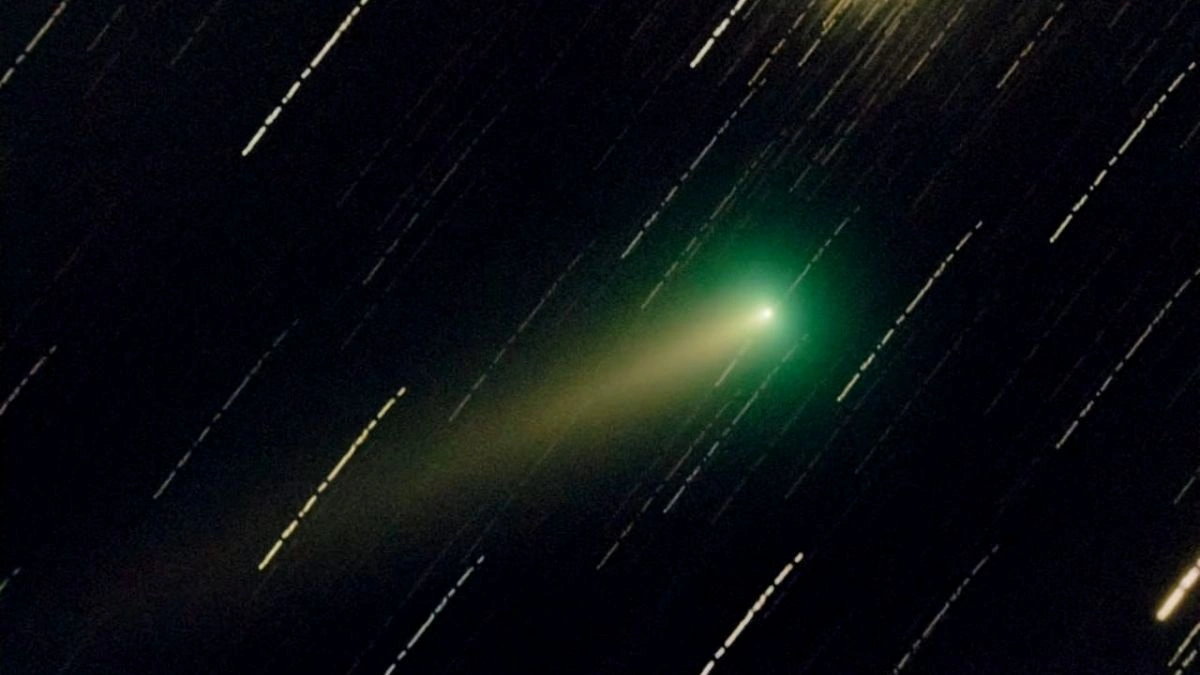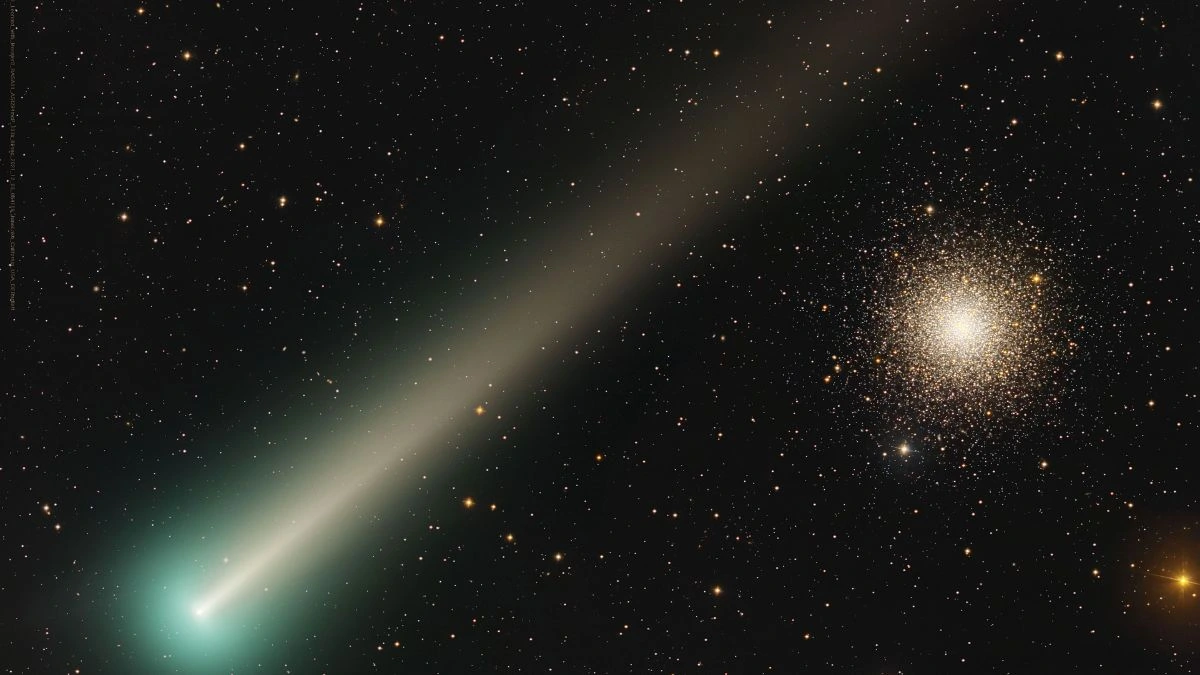News
Dubai: You Can See Rare 50,000-Year-Old Comet In Next Month

Astronomy lovers in Dubai will have a once-in-a-life opportunity to observe a 50,000-year-old Comet pass through the skies of Dubai in February.
The comet, named C/2022 E3 (ZTF), can be observed passing above Earth from Dubai skies on February 4, 2023. The official Instagram handle of the “Dubai Astronomy Group” posted that the comet will be visible between 06:30 PM and 09:30 PM, and can be seen clearly in the skies from the Al Qudra Desert in Dubai, where there will be a special event with a group of astronomy lovers gathering to see the same.
From Dubai, the comet C/2022 E3 (ZTF) can be spotted traveling above the Earth
Several comets, meteors, etc. pass in closer vicinities of Earth each year, which can be viewed from the skies of different locations, depending on the trajectory of the object.
However, what makes viewing the C/2022 E3 (ZTF) comet a unique experience is the fact that this comet was last expected to have been seen at least 50,000 years back, during the Ice Age.

According to the International Astronomy Centre, The C/2022 E3 (ZTF) comet was first seen this year in UAE skies at dawn on January 14 from Abu Dhabi. The comet appeared as a speck in the skies with a 6.5 magnitude shine and had a dust tail. The iconic tail of the comet was seen at 307 degrees opposite the Sun.
To make the event memorable, the Dubai Astronomy Group (DAG) is organizing a special event night on February 4, 2023, at the Al Qudra Desert. Entry to the event organized by DAG will be charged, and below are the rates:
- DAG Members: AED 70 per person.
- Adults: AED 120 per person.
- Kids (Under the age of 13): AED 100 per person.
The event is scheduled to happen between 06:30 PM and 09:30 PM and will have the below programs:
- 06:40 PM: Introduction.
- 07:00 PM: Talk about how to observe the C/2022 E3 (ZTF) comet followed by the actual observation of the C/2022 E3 (ZTF) comet.
- 08:00 PM: Discussion on Arabian Astronomy.
- 08:15 PM: Sky mapping session with a discussion on stories around constellations.
- 08:30 PM: Q&A session.
- Observing Jupiter, Moon, Mars, etc. are other sky objects through a telescope.
- Chance to photograph the celestial objects you see through the telescope using your mobile phone.
There is also an optional pickup service offered by the organizers, wherein you have to pay an extra AED 50 for the same. The pick-up will be at 04:45 PM from the Rashidiya Park parking area next to the Centerpoint Metro Station.
If you’re interested to join the sky-gazing event by DAG, feel free to reach out to them through their official Instagram handle (@dubaiastronomy).
Even though this is once in a lifetime opportunity for UAE residents, this is not the only celestial event to look out for in 2023.
Venus and Saturn in Close Proximity in 2023
The upcoming event will happen on January 22, wherein we’ll be able to see both Venus and Saturn, (the second and sixth closest planets to the Sun in our solar system), with about half a degree in distance between both. On the very next night (January 23), we also expect a slender crescent moon that’ll join Venus and Saturn in close proximity when looked upon in the sky, making for a spectacular view of the year.
Venus and Jupiter in Close Proximity in 2023
Also expected is to see both Venus and Jupiter (Jupiter is the 5th closest planet to the Sun) close to each other. Experts predict both planets to reach the closest to each other on March 1, during which we’ll be able to observe them even with ordinary telescopes.
Venus Closest to “Taurus the Bull” Constellation Stars
On April 21, Venus will be the closest to the “Seven Sisters”, which is a common term given to the “Pleiades” cluster of stars, which is part of the constellation called “Taurus the Bull”.
The “Perseid” Meteor Shower
Expected to fall on August 12, the “Perseids” meteor shower will be about 60 shooting stars across our vast sky per hour, according to the information published on the website of National Geography. This happens as the debris out of a comet enters the Earth’s atmosphere and disintegrates, which essentially causes a firework in the sky and when seen from Earth feels like stars traveling and super-speed.
Related Topics
🔹President Of UAE, Angolan Counterpart Review Advancing Relations
Partial Solar Eclipse
On October 14, a partial solar eclipse will take place when the Earth, Moon, and Sun will align nearly perfectly with each other. The partial eclipse is also predicted to turn, for a few moments, into an annular eclipse.
During the eclipse, the sunlight will slowly start fading away as the Moon starts taking its place between the Sun and the Earth, blocking light from Sun reaching Earth’s surface. Solar eclipses only last for a few minutes usually, and aren’t equally visible with the same intensity from all places, even within the same country. Also, it is advised not to look directly at the Sun during an eclipse as there are high risks that the UV rays during the eclipse can cause damage to the human eyes.